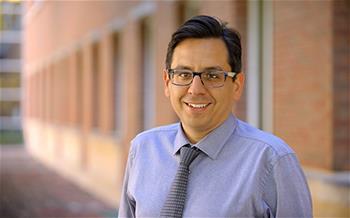Jan 10, 2022
New research explores implicit biases of creativity
How creative are you? It likely depends on who’s judging and how they’re asked to share their evaluations. People downgrade a person or idea as creative if it is associated with embarrassing, stigmatized or controversial domains, according to new research from Gies College of Business.
 “One reason people get it wrong is that it might sometimes be awkward, risky or even embarrassing to say that a person or a product is highly creative, particularly if they are associated with a highly stigmatized domain,” said Professor Jack Goncalo, who co-authored the paper “Implicit Impressions of Creative People: Creativity Evaluation in a Stigmatized Domain” with Yale University professor of psychology Melissa J. Ferguson.
“One reason people get it wrong is that it might sometimes be awkward, risky or even embarrassing to say that a person or a product is highly creative, particularly if they are associated with a highly stigmatized domain,” said Professor Jack Goncalo, who co-authored the paper “Implicit Impressions of Creative People: Creativity Evaluation in a Stigmatized Domain” with Yale University professor of psychology Melissa J. Ferguson.
The research introduces a new way to measure creativity that captures people’s implicit versus explicit impressions of others.
“The explicit way to figure each other out is to simply ask people about their feelings, thoughts, and attitudes. But when asking about a creative pitch or a performance, for example, there are biases on what people are willing to say. There are all kinds of reasons people may be reluctant or unwilling to call someone creative, including if the person, idea, or domain is stigmatizing in some way. This is why we turned to implicit measures because they can tell us what people are thinking without asking them,” said Ferguson.
The computer-based measure used for this study uncovers implicit views evaluators might not be aware of or are unwilling to report but nevertheless drive important decisions like who to hire, fund or endorse. The measure reveals the spontaneous and uncontrollable thoughts someone has when looking at a person or product or idea.
Goncalo said the findings seem to square with real world examples of highly creative people who were ignored until well after their death because their work was too controversial in its time to be recognized as a creative contribution. He cites Henri de Toulouse Lautrec, who departed from traditional subjects to paint prostitutes, drug addicts, and alcoholics. He was embraced in the cabaret scene in Paris but did not achieve widespread acclaim until after his death.
Some of today’s stigmatized domains that are on the periphery of mainstream markets include the cannabis industry, vape pens, sexual function pharmaceuticals, and digital gambling.
“Even now, these issues in evaluation may affect the production of creative works that focus on stigmatized groups. Executives may be unwilling to explicitly endorse ideas in stigmatized domains, hindering their development or preventing them from being made at all,” he said. “On the flip side, an implicit measure might also remove an unfair advantage of simply working in a socially acceptable domain as an easier route to creative recognition rather than engaging in rebellious acts of creative exploration.”
To uncover implicit bias, Goncalo and his team asked people to evaluate the creativity of an inventor who developed a new technology but varied whether it was applied to improve a running shoe or a sex toy.
“We found that the explicit measure captured a lower rating for the inventor of the sex toy, but the implicit measure did not differ at all --the inventors were judged as equally creative,” said Goncalo. “This suggests that people can downgrade the creativity of people who work in a stigmatized domain, perhaps unfairly and that our implicit measure might be helpful in capturing more candid assessments.”
“This research provides the first evidence for the robust existence of a new implicit perspective on the impressions of creative people. It offers a new tool to understand creative evaluation across industries that doesn’t rely on explicit evaluation,” said Goncalo. “Our results hint at the possibilities that await in many other embarrassing, stigmatized, or controversial domains in which people might choose to do their most creative work but that their peers (and creativity researchers) might fear to tread.”


